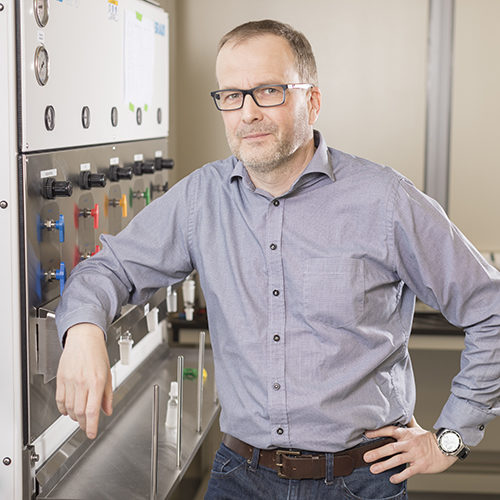In October, Thomas Baumgartner, chemistry professor in the Faculty of Science at York University, will join the renowned Research Center for Materials Science at Nagoya University in Japan as a visiting professor.

Baumgartner will collaborate with researcher and organic chemistry Professor Shigehiro Yamaguchi on exploring organic fluorescent compounds for biosensing applications.
Their work will build on research they published together in 2021, in which they used one of the a fluorescent compounds (or fluorophores) developed in Baumgartner’s lab to create new, more stable fluorophores with even stronger emissive properties in the near-infrared (NIR) range. NIR-fluorescent dyes are promising materials for biosensing devices and imaging deep tissues and biological samples. In their study, the researchers were able to successfully use one of their newly developed fluorophores to visualize blood vessels in some organisms.
“Based on this initial success, we are planning to further expand our collaboration towards more improved biomarkers and novel powerful fluorophores in general, which would hopefully lead to collaborative funding and mutual graduate student exchanges down the road,” said Baumgartner, who is the Canada Research Chair in Sustainable Organomain Group Materials (Tier 1).
He also plans to give several lectures at various universities in Japan, giving him the opportunity to interact with other leading Japanese research groups that develop novel functional materials, including those for sustainable energy applications.
“I will be able to showcase our SDG [Sustainable Development Goal] centred research on sustainable energy materials at York to a broad audience in Japan.”
The Research Center for Materials Science, founded by Nobel Laureate Ryoji Noyori, aims to create new and improved molecular materials, exploring their structural and functional properties as well as reaction mechanisms. It carries out creative studies on materials and their functions through international and interdisciplinary collaborations and shares its original research activities with a wide international scientific community.
